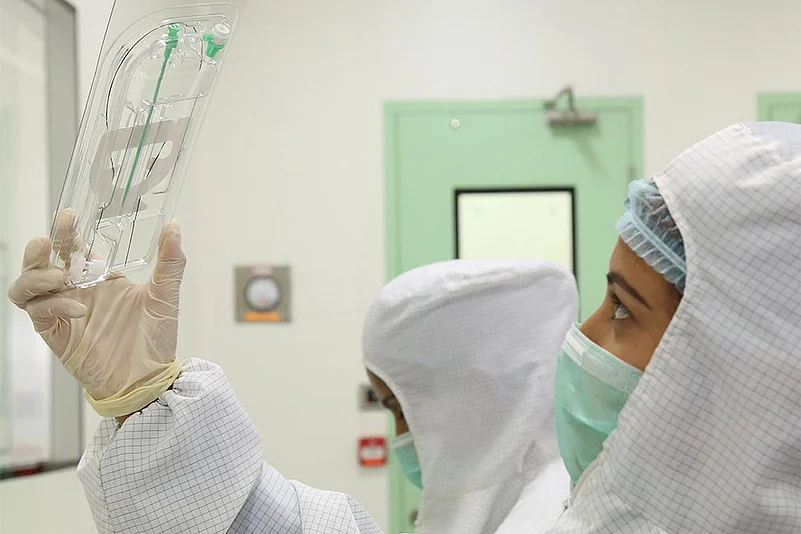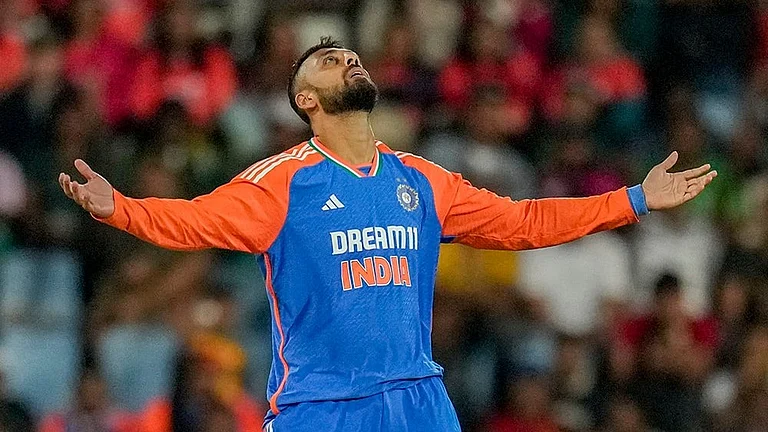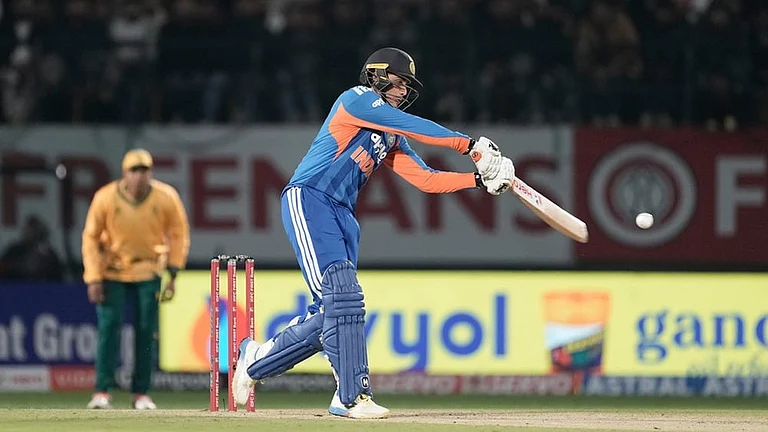The medical device industry, which barely makes up one per cent of manufacturing in India, seems to have escaped the government’s attention and India continues to depend on imports for most of its surging demand for devices such as coronary stents. Outlook’s report on the pricing of coronary stents and corruption in the industry (Heart for Mart Sake, December 26) revealed that foreign players, who have the resources to outbid Indian companies through kickbacks to doctors and hospitals, control 80 per cent of the market. And that’s not the only deterrent.
“In the past five years,” says Gurmit Singh, founder of Translumina, a Delhi-based stent manufacturing company, “Indian manufacturers have been able to corner only 35 per cent unit-share and 25 per cent value-share of the total stent supply chain estimated to be worth around Rs 2,000 crore.” The biggest handicap faced by Indian manufacturers is the requirement of approval by the US Food and Drugs Administration (FDA) specified in the tenders issued by most government hospitals in the country. “We agree that the FDA has a robust system to evaluate the devices before approval, but this doesn’t mean anything that’s not FDA-approved is necessarily poor in quality,” says Singh. “The extent of clinical evaluation is a much better criterion to ascertain the effectiveness of Class III medical devices.”

In fact, getting FDA approval involves clinical trials on US-based patients, an expensive affair, so no manufacturer based outside the US has secured it so far. “FDA has evolved over the years with huge investments by the government and our Indian regulatory system (Drug Controller General of India) also needs some time,” says Singh. “They are doing a fantastic job for the past few months, bringing all stakeholders together to devise new, clearer rules for medical devices.” The FDA-approval requirement has been questioned by many, including Dr M.S. Valiathan, a leading cardiologist and former president of the Indian National Science Academy, but there is no alternative yet, as India has no mechanism for national certification of medical stents.
Ironically, most stents manufactured in India are exported—to more than 80 countries. Translumina, Meril Lifesciences and Sahajanand Medical Technologies—the top three Indian manufacturers—have together sold more stents in international markets than in India. “This shows Indian firms are far ahead in terms of standards for innovation and quality,” says Pushpak Ranka, founder of Multimedics, an Indian stent manufacturing company. In fact, drug eluting stents made by Translumina featured on the European Heart Journal’s 2014 list of 10 recommended stents. And yet both government and private hospitals refuse to accept such devices. “We don’t need any special grants or subsidies, but Indian-made technologies deserve to be accepted on par with foreign-made ones in case we demonstrate equivalence,” says Punita Sharma, co-founder of Translumina. “That would help ensure sustainable, efficient and cost-effective super-speciality treatments for common citizens.”
Recently, the Union Ministry of Health and Family Welfare wrote to all state governments suggesting removal of the FDA-approval requirement from tenders, but since this wasn’t a notification, it hasn’t really changed the scene. So, patients continue to pay much more than they would need to if the stents were bought from Indian manufacturers, who sell them at nearly half the price of the imported ones.
Legal researcher K.M. Gopakumar says domestic manufacturers are at a disadvantage even in the private healthcare sector as the kickbacks involved often tilt the scales in favour of foreign firms. “Before an angioplasty, doctors often tell patients and their families that foreign-made stents are better despite the higher cost,” he says.
Meanwhile, a recent Department of Pharmaceuticals (DoP) order putting all types of drug eluting stents under one umbrella of price control has brought cheer to Indian manufacturers. Ranka says the move will help level the playing field. “Without an upper price limit, the turf favours foreign companies and leads to foul play,” he explains. “This move will help Indian companies grab a larger share of the market and it would benefit the patients.”
The DoP order, though, is only the first step as the industry demands policies more conducive to encouraging innovation and production by domestic manufacturers. Most manufacturers are producing generic stents—stents whose patent has run out and which can, therefore, be produced by any manufacturer. According to Jitender Sharma, director and CEO of the Andhra Pradesh MedTech Zone (AMTZ) coming up in Visakhapatnam, the current structure of custom duty makes manufacturing such stents in India a lot costlier than importing them. “Under the Correction of Inverted Duty Structure, the basic customs duty on raw materials, parts or accessories required for medical devices manufacturing has been reduced to 2.5 per cent as per the notification issued by the department of revenue in the finance ministry (No. 4&5/2016-Customs, dated January 19, 2016),” says Sharma. “On the other hand, the basic custom duty on finished products as medical devices has been increased from 5 per cent to 7.5 per cent. The impact of this dual change could lead to an incremental cost difference of about 20 per cent or more between an indigenously manufactured medical device vis-a-vis an imported one.”
The huge difference in custom duty is proving to be a major deterrent for manufacturers, many of whom have ended up simply importing the devices. Though some see hope in the government’s recent moves and expect conditions to change in favour of Indian manufacturers—the rider being that the government will fix the prices not at the central government health services (CGHS) level, which would have kept foreign manufacturers out of the picture, but at a competitive level.
Ganesh P. Sabat, CEO of the Surat-based Sahajanand Medical Technologies, points to another major hurdle for Indian manufacturers—the absence of any regulatory requirement for pre-clinical studies and evaluation of stents made in India or imported. “There is only one testing laboratory, in Thiruvananthapuram, which handles both medical devices and pharmaceuticals,” says Sabat. “First, the government needs to have a stringent regulatory system in India, which is not there. Once that is in place, we need to make sure there is infrastructure to carry out such studies.”
And, indeed, besides efforts to bring all medical devices under a regulatory framework, the government is in the process of addressing gaps in infrastructure to boost manufacture of medical devices within the country. Sharma, who is also associated with the framing of the cardiac stent pricing policy, says the infrastructure being created under the public-private partnership model will have ready-to-use test labs and manufacturing units to attract more Indian companies. “World-class medical device manufacturing zones such as AMTZ are setting up state-of-the-art scientific facilities, along with low-cost ready-to-use manufacturing units, bringing in a more industrial-scale, process-driven reduction in costs,” he says. “The fiscal duty correction and industrial-scale, process-driven cost-reduction could cumulatively give the indigenous industry the scientific edge and cost advantage of over 50 per cent, boosting domestic manufacturing in a major way.” Work on the zone started in August 2016 and it is expected to be ready for use by 2018.
Another challenge faced by the Indian stent manufacturers is the lack of resources and monetary support to fend off competition from foreign players. “Investment for manufacturing stents requires not only an organisational structure, but also resources to generate expertise and then allocate expertise optimally,” says Singh.
For device-manufacturing companies to follow up on the success of some of the Indian pharmaceutical companies that have emerged as leaders of affordable and quality generic medicines even in developed countries, there is a lot that needs to be done—for starters, a more robust regulatory framework and measures to create a level playing field for domestic manufacturers. Until that happens, patients in India would continue to be fleeced every time their heart needs a stent.


























